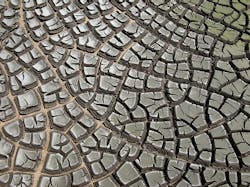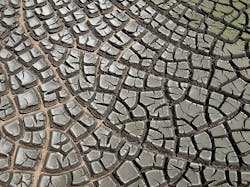Wastewater sludge can be used to remove PAHs from contaminated soil, finds European study
BRUSSEL, Belgium - Wastewater sludge is widely used to remove toxic polycyclic aromatic hydrocarbons (PAHs) from soil, and yet the mechanisms underlying this process remain unclear.
A new study reveals the extent of PAH removal following different treatments, and could provide a useful resource for those looking to diminish the effects that these pollutants have both on people and on the environment.
In Europe, environmental concentrations of PAHs are strictly regulated. As part of its REACH (EC 1907/2006) programme, the EU has restricted the use of these chemicals in consumer products, particularly anything that comes into repeated contact with a person’s skin or mouth, such as clothing and children’s toys.
In spite of such efforts at mitigation, and owing to the time they take to break down, PAHs tend to accumulate in the environment, and notably in soil.
In response to this, much investigation has been done into dealing with unwanted PAHs in soil, and a novel solution has emerged: wastewatersludge. It turns out that this by-product of sewage treatment is capable of at least partially eradicating PAHs when it is used to treat contaminated soil.
The new study by a Mexican research team assessed why wastewater sludge possesses this capacity to stimulate PAH resludgemoval, as well as the extent to which this removal occurs. The team tested the effects of sterilised and unsterilised wastewater sludge using soil samples from the former Lake Texcoco and agricultural soil from another site.
Samples from both sites were contaminated with the PAHs phenanthrene and anthracene, and for some treatments they also introduced polyacrylamide gel, a substance that has previously been linked with accelerating PAH removal.
In addition, the researchers used control treatments consisting of PAH-contaminated soils without sludge, and PAH-contaminated sludge without soil.
After 112 days, the team opened up the jars containing their treatments to assess PAH removal.
The lowest rates of removal were seen in the sludge-PAH solution with no soil, and the soils treated with sterilised wastewater — that is, wastewater possessing depleted microbe populations.
This indicates the importance of both wastewater sludge-based microbes and possibly, the researchers suggest, the physical and chemical properties of the soil itself, such as pH and salinity, in driving PAH depletion.
While overall the addition of wastewater sludge increased PAH removal, the best results were seen in those treatments that also contained polyacrylamide. Notably, there were significant differences in remediation potential observed between the two different soil types, likely associated with differences in soil composition.
These results emphasise the importance of a multifaceted approach to PAH contamination, as not only did physical, chemical and microbial soil properties play a key role in determining the degree of PAH depletion, so did the type of contaminant (in this case phenanthrene or anthracene) and the microorganisms present.
Researchers suggested it is important to account for multiple factors in order to improve efficiency. Wastewater sludge is indeed a useful tool to dissipate hydrocarbons, but its effects can be accelerated using polyacrylamide in at least some soil types, they said.
The team emphasised the need to treat used sludge before its final disposal in order to limit damage caused by the PAHs it then contains. It is also important to account for pre-existing physical, chemical and microbial properties of both the soil being treated and the wastewater sludge used to treat it, as all of these factors can have an impact on the efficacy of wastewater sludge treatment.
###
Read more

